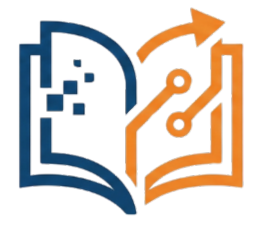Writing the Review of Related Literature
- Introduction to the Review of Related Literature:
The review of related literature is a critical component of a research paper or project that provides an overview and analysis of existing research on a specific topic. Its primary purpose is to establish the current state of knowledge in the field, identify gaps in the literature, and justify the need for the proposed research. A comprehensive literature review helps demonstrate the researcher’s understanding of the topic and situates their work within the broader academic context.
- Identifying Relevant Sources:
a. Types of sources: Relevant sources for a literature review may include academic books, journal articles, conference papers, dissertations, and other scholarly works. Depending on the topic, non-academic sources like reports, newspaper articles, or blog posts may also be appropriate.
b. Searching in academic databases and using search engines: Utilize academic databases (e.g., JSTOR, PubMed, Scopus) and search engines (e.g., Google Scholar) to locate sources relevant to the research topic. Learn to use advanced search techniques (e.g., Boolean operators, truncation) to refine search results.
c. Evaluating the credibility and relevance of sources: Assess the credibility of sources by examining factors such as the author’s expertise, the publisher, and the publication date. Determine the relevance of sources by considering their alignment with the research question, focus, and scope.
- Reading and Analyzing Sources:
a. Critical reading strategies: Read sources with a critical eye, questioning the author’s assumptions, methodology, and conclusions. Look for potential biases, limitations, or contradictions in the research.
b. Taking notes and summarizing key findings: As you read each source, take detailed notes on the main arguments, findings, and methodologies. Summarize the key points in your own words to facilitate understanding and integration into your literature review.
c. Identifying themes, trends, and gaps in the literature: Look for patterns and connections among the sources, noting emerging themes, trends, controversies, or gaps in the research.
- Synthesizing and Organizing the Literature:
a. Comparison and contrast of different sources: Compare and contrast the arguments, methodologies, and findings of different sources to identify areas of agreement and disagreement.
b. Grouping sources by themes or chronology: Organize sources by grouping them according to themes, trends, or chronological order. This will help create a coherent structure for your literature review.
c. Creating an outline for the literature review: Develop a detailed outline that organizes your literature review according to the identified themes, trends, or chronology. Use headings and subheadings to guide the reader through the review.
- Writing the Literature Review:
a. Elements of a well-written literature review: i. Introduction: Provide context for the review, state the research question, and explain its significance. ii. Body: Organize and synthesize the sources according to the outline, demonstrating how they relate to the research question. iii. Conclusion: Summarize the main findings, identify gaps in the literature, and suggest areas for future research.
b. Integrating sources and using citations: Paraphrase, summarize, or quote directly from sources to support your analysis. Properly cite all sources using a consistent citation style (e.g., APA, MLA, Chicago).
c. Maintaining a clear and cohesive writing style: Use clear and concise language, maintain a consistent tone and voice, and ensure smooth transitions between sections.
- Peer Review and Revision:
a. Strategies for providing constructive feedback: Offer specific, actionable, and respectful feedback that focuses on the content, organization, and clarity of the literature review.
b. Revising and refining the literature review: Incorporate feedback from peers and revise your literature review accordingly. Focus on improving the content, organization, and
clarity of your review, and address any gaps or inconsistencies identified during the peer review process.
- Wrap-up and Reflection:
a. Recap of the key components of a literature review: Reiterate the importance of a literature review in situating the proposed research within the broader academic context, and review the key components, including identifying relevant sources, analyzing and synthesizing information, and writing a clear and cohesive review.
b. Discussion of challenges and lessons learned: Encourage students to share their experiences, challenges, and insights gained throughout the process of writing their literature review. This can help identify common pitfalls and areas for improvement.
c. Suggestions for further improvement and practice: Offer additional resources, such as writing workshops or online tutorials, to help students continue refining their literature review skills. Encourage students to seek feedback from peers, mentors, or instructors as they continue to develop their research and writing abilities.

